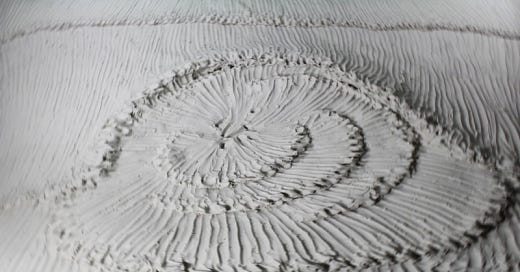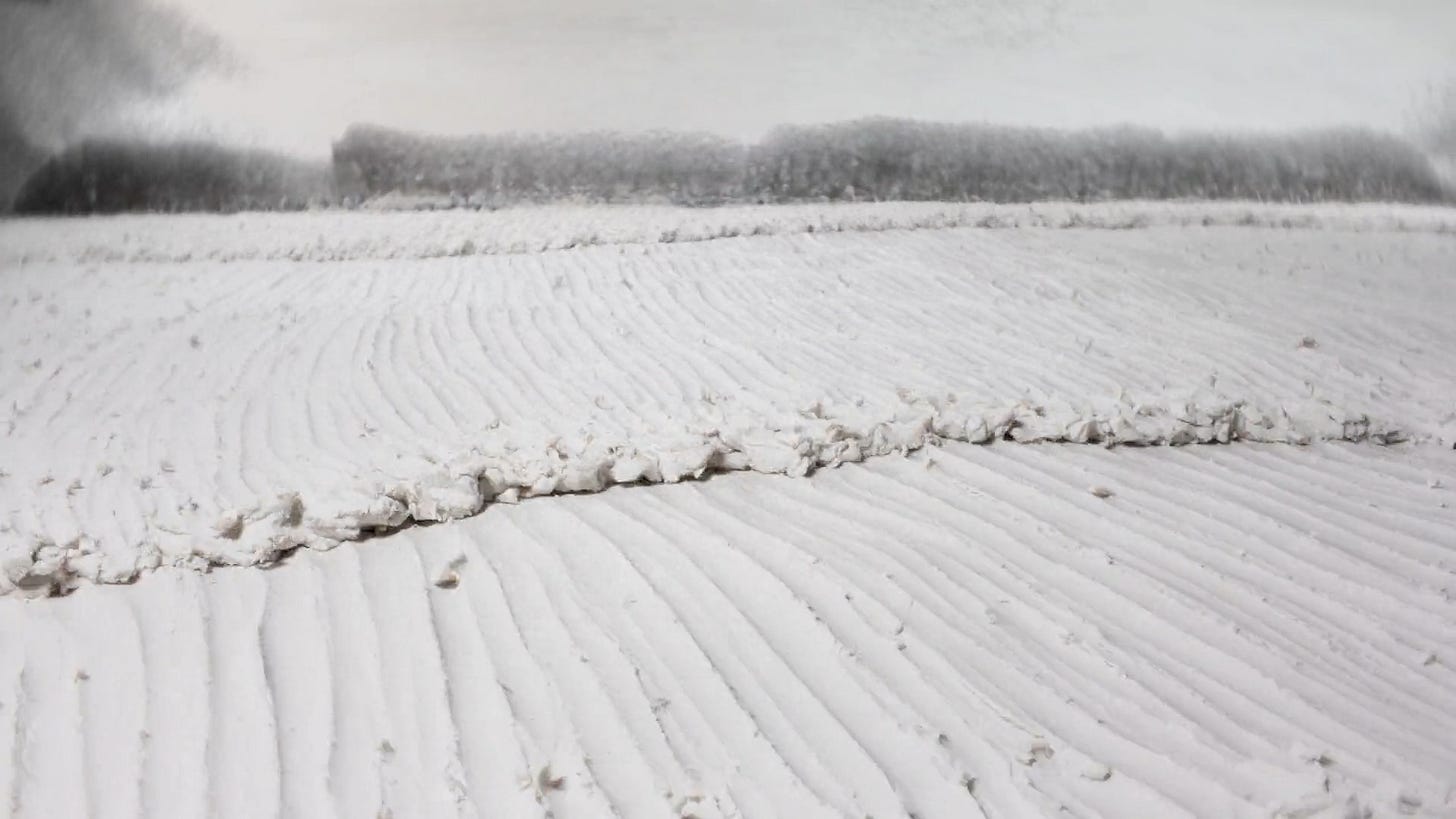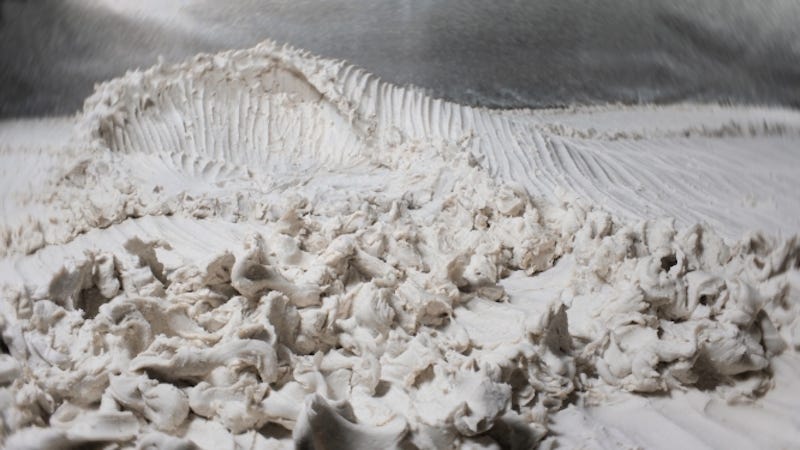Short films and poetry are cousin forms, often compared to one another. Taking the analogy literally, I’ve led myself down a pleasant, arcing tangent of thought about shorts that work with poems. Regular readers may remember my analyses of Negative Space and The Man with the Beautiful Eyes. Today I’m writing about another such film: Datum Point (2015), by Japan’s Ryo Orikasa. The title is a little stiff, but the film is a tide of fluid motion.
Orikasa is a filmmaker deeply indebted to literature. His graduate film Writings Fly Away (2011), made at the prestigious Tokyo University of the Arts, works with Oscar Wilde’s The Happy Prince, while his latest short, Miserable Miracle (2023), adapts a text by the idiosyncratic Belgian-French poet Henri Michaux.
What’s unusual with Orikasa is that he likes to work with the writing—the visual script—itself. In Writings Fly Away, Wilde’s story is narrated in voiceover but simultaneously scrawled out onscreen by an invisible hand. Some words come to life: see how “swallow” suddenly takes flight, the word folding in two and flapping like wings. Miserable Miracle pushes this approach further, taking cues from Michaux’s own illustrations to develop a hallucinatory tour through images that fluctuate between symbols and pure visions (watch an excerpt below).
Datum Point also has a literary source, but it is different in a couple of ways. It works with a Japanese text, the poem of the same name by the modernist poet Yoshiro Ishihara (read it below alongside Orikasa’s translation). It doesn’t use a voiceover. And it is made not in 2D animation but in stop motion, with clay.
My one regret in picking this film is that it isn’t available to view online. So I’ll flex my ekphrastic muscles and try to describe what happens—or rather what I think is happening, as we’re pushing into abstraction here.
The film opens on a shot of clay waves rushing endlessly toward us, under a grainy grey sky flickering with irruptions of white light. The grain may be rain, or snow. Out of the sea, taller waves surge and break, interrupting the regular rhythm of the small ones and sending out furious eddies across the grooved surface. After three minutes, the screen blacks out before returning to a higher shot of the same sea. Now we realise that the eddies form around Japanese characters that are inscribing themselves into the water’s surface. One character at a time, Ishihara’s poem is spelt out. Then we return momentarily to the lower angle. Cut to black, and Ishihara’s poem is displayed in full before the credits.
This is a vision of ethereal beauty. The sight of water writing about itself has haunted me ever since I saw Datum Point in 2018. I’m reminded of the sentient ocean on a distant planet which seems to communicate with humans in Stanisław Lem’s novel Solaris. The fuzzy, unstable atmosphere above also makes me think of the Brothers Quay’s beautiful study in light, In Absentia (2000). But, really, Orikasa’s world looks like nothing else.
The film deals in paradoxes. Everything moves fast, yet the poem appears gradually and with some effort, judging by the disruptions the characters cause. The sea is stormy, yet it always reverts to the basic serenity of the plain grooved surface (much as the glassy hum of the electronic soundtrack is troubled by hisses and scratches, yet persists). The images are abstract, yet we have little trouble reading them as a body of water.
Ishihara’s poem works with abstractions too, of course, as it speaks of the mysterious shapes and movements formed by water. It sketches out some kind of cycle from source to height, shapelessness to shape, and back again. (A datum point is a benchmark by which measurements, such as vertical distances on land, are made; the Japanese term can be literally translated as “water level origin point.”) We naturally think of waves forming, but the text lends itself to metaphorical readings. Was Ishihara, who had a (troubled) Christian faith, thinking of the upward reach of spiritual questing? Or perhaps of coming into life, then meeting the great leveller, death?

Though the poem has a metaphysical resonance, this is talked about in terms of a tangible medium: water. This is typical of the poet, who often plays with the tension of giving form to abstractions. (For another example, read his poem Horses and Riots, which speaks of the horse that “runs the rift between” two other horses, here.)
Orikasa grasps this essential idea and develops it in a way particular to animation: the liquid becomes solid, as clay. Another paradox. It’s as though the water has found the substance it is looking for in the poem.
Not only do Ishihara’s images take concrete shape in the film, it is the characters themselves that cause the water to rise and eddy. They are triggering visualisations of the very things they are describing. This is a highly imaginative way to adapt a poem as a film, which looks more effortless than it sounds when I describe it. Credit here also to Orikasa’s graceful animation, which is all the more impressive considering that he had never worked with clay before.
I’ve never seen Datum Point on the big screen. One day, I hope to program it somewhere. Or better still: convince a gallery to screen it, so that I can surf its mesmeric textures on a loop, always returning to the start—my northern datum point.









I had the opportunity to watch miserable miracle at a film festival this year and it completely floored me. By far the most inspired and inspiring work I’ve seen in some time.
Thanks for the great write up! Was really happy to see Orikasa’s work getting love.